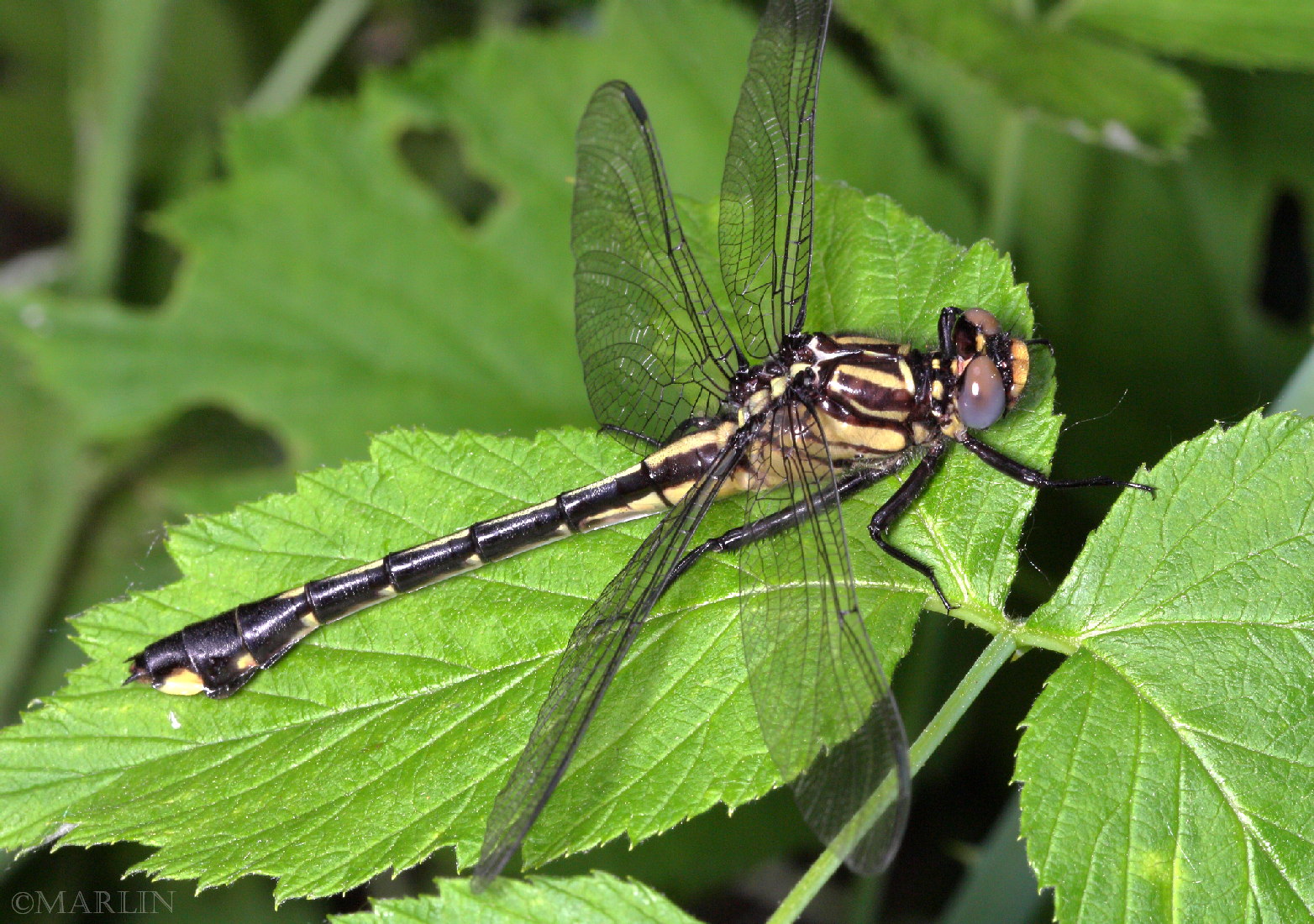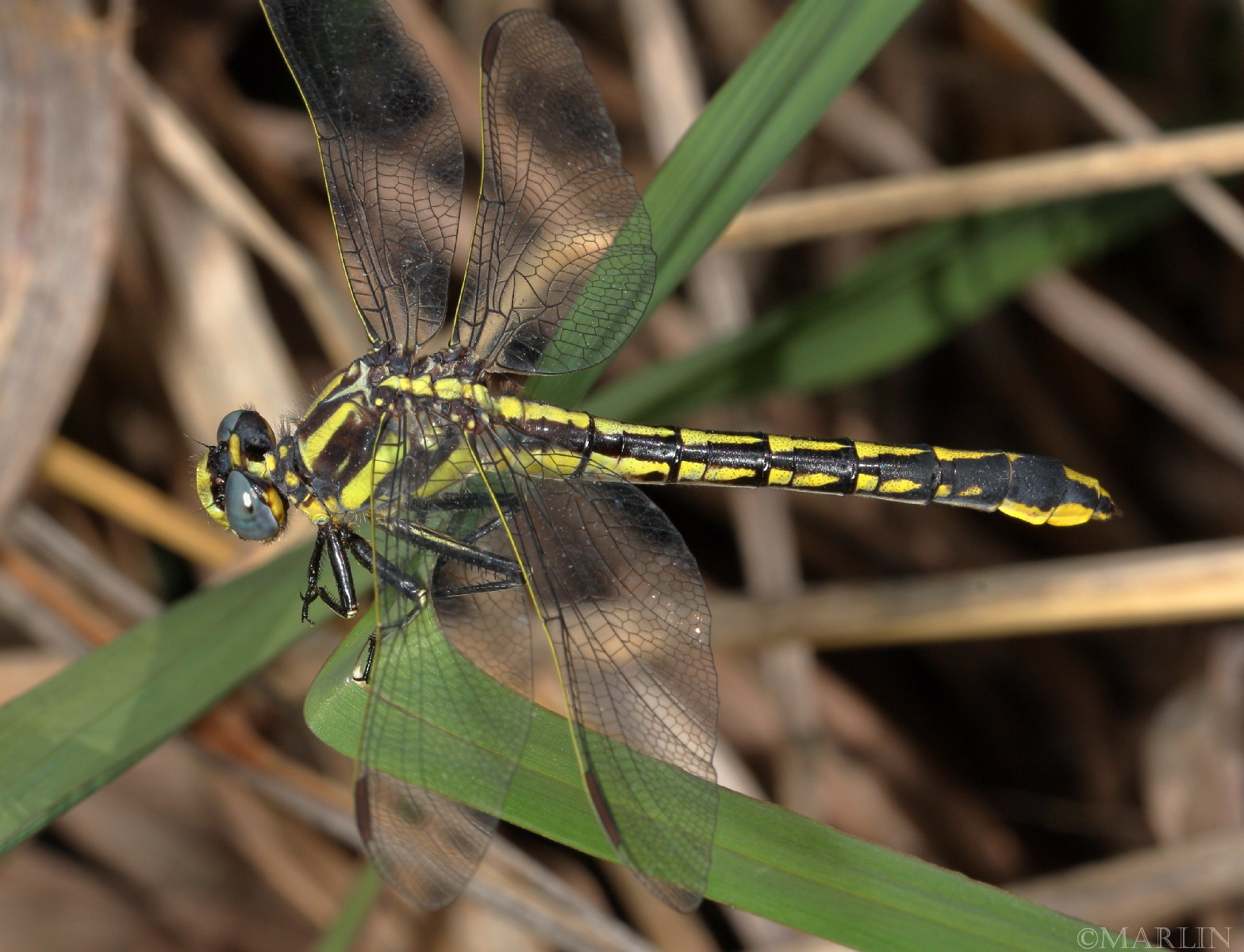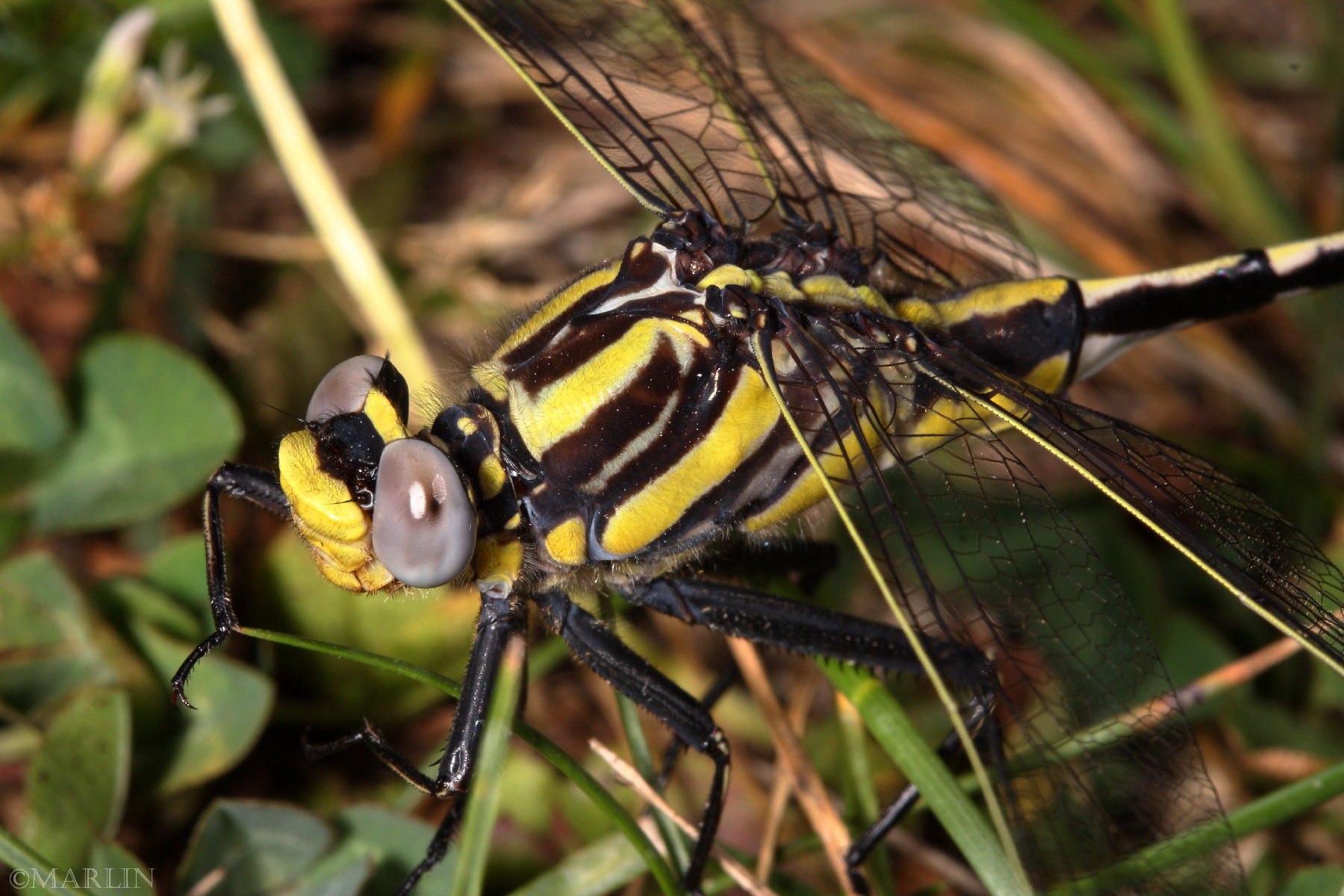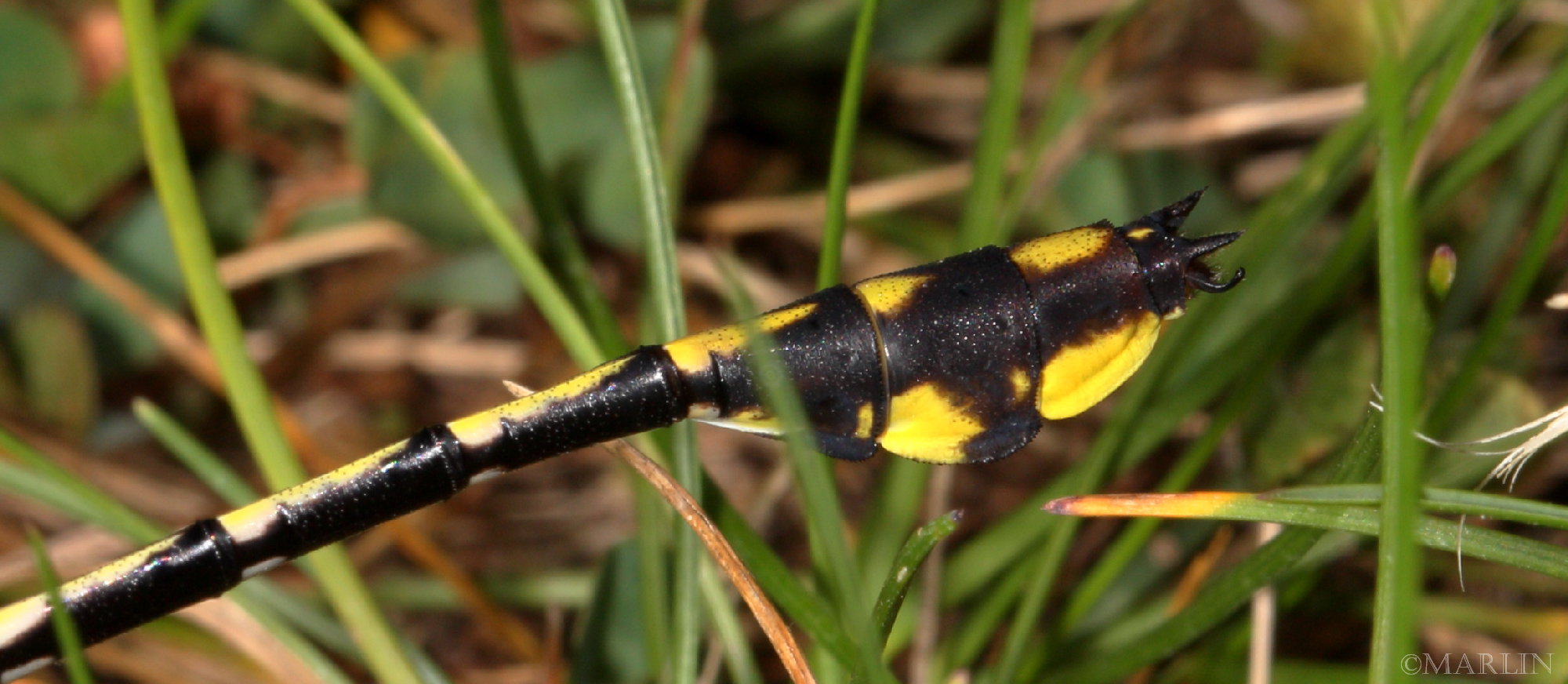Plains Clubtail Dragonfly – Gomphus externus
Family Gomphidae – Clubtail Dragonflies
Live adult male & female dragonflies photographed at Ogle County, Illinois
Family Gomphidae contains about 100 species in 14 genera in North America and about 900 species worldwide. The presence and abundance of dragonflies and damselflies may be taken as an indicator of ecosystem quality. Local populations can be strongly affected by any change in water flow, turbidity, or in aquatic or waterside vegetation. The greatest numbers of species are found at sites which offer a wide variety of microhabitats, prey, and clean water. Odonate nymphs are aquatic, and as such need unpolluted water.
Dragonflies have excellent eyesight. Their compound eyes have up to 30,000 facets, each of which is a separate light-sensing organ or ommatidium, arranged to give nearly a 360° field of vision.
Dragonflies are completely harmless – they do not sting or bite. Indeed, they are beneficial in the same respect spiders and other predators are beneficial – they keep the burgeoning insect population in check. Many of these species prey on each other; I often see dragonflies with damsels in their clutches.
Dragonflies are among the most ancient of living creatures. Fossil records, clearly recognizable as the ancestors of our present day odonates, go back to Carboniferous times which means that the insects were flying more than 300 million years ago, predating dinosaurs by over 100 million years and birds by some 150 million.
Much larger dragonfly species existed in the distant past than occur on earth today. The largest, found as a fossil, is an extinct Protodonata named Meganeura monyi from the Permian period, with a wingspan of 70-75 cm (27.5-29.5 in). This compares to 19 cm (7.5 in) for the largest modern species, the Hawaiian species Anax strenuus. The smallest modern species recorded is the libellulid dragonfly, Nannophya pygmaea from east Asia with a wingspan of only 20 mm, or about ¾ of an inch.
Dragonflies are the world’s fastest insects and, although estimates of their speed vary wildly, most credible authorities say they are capable of reaching speeds of between 30 and 60 km/h (19 to 38 mph). A study showed that dragonflies can travel as much as 85 miles in one day.
References:
1. Bruce Marlin, Bugguide.net, ‘Plains Clubtail‘
Insects | Odonata Index | Dragonflies | Damselflies | Bugs Index | Spiders
Tree Encyclopedia / North American Insects & Spiders is dedicated to providing family-friendly educational
resources for our friends around the world through large images and macro photographs of flora and fauna.





